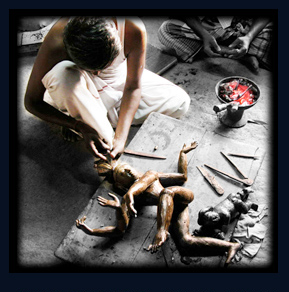

![]()
In the wake of globalization and the rapid growth of the information technology super-highway, the richness and value of long-established technologies used in traditional societies is often lost sight of. This has tragic consequences when the people or local practitioners of these arts give up their craft. The economies of many villages and ethnic neighborhoods around the world have depended on these technologies to produce handicrafts and artworks, for hundreds and sometimes thousands of years. When these technologies and small-scale economies die out, these communities often face out-migration of their youth, disruption of families and other social problems. This project will help promote self awareness, research, and markets for the producers of traditional crafts.
The CISA3 Traditional Indian Technologies Project is aimed at using digital technologies to create a new way of researching, recording, analyzing and partnering with traditional craftspeople in India to conserve these traditions and help the artisans market their works in India and to the global community.
Since 2004, CISA3’s Associate Director for Archaeology, UCSD professor Tom Levy, has been leading a small research team in Swamimalai, in the south Indian state of Tamil Nadu (see box). The team has documented the bronze casting industry and the traditional technologies they use -- in some cases, technologies that go back 1,000 years. Tom, his wife, Alina Levy, and the Sthaphathy brothers, have co-authored a book entitled Masters of Fire: Hereditary Bronze Casters of South India (Bochum: German Mining Museum). It will appear in the summer, 2008.
The next step is for the CISA3 team to work with the Swamimalai Icon Manufactures Co-operative Cottage Industrial Society to establish a ‘computer kiosk,’ where a web-based questionnaire will enable the society’s more than 150 members to input data concerning their genealogies, organization of workshops, production methods and digital images of their metal icon products to facilitate marketing their works. While the questionnaire data will be off-line, the marketing information would be available to the public through WikiMapia, a new application and data layer that works in Google Earth.

Skilled craftsman at S. Devasenapathy & Sons.in Swamimalai, India, works on a wax model to be used in the creation of a bronze statue using the "lost wax" method.